Junot Díaz in the Boston Review:
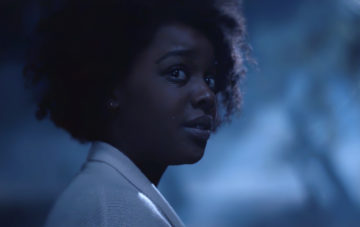 Those of us who revere Octavia Butler’s work and have never stopped mourning her passing do so in part, I suspect, because we know that no matter what happens in this Universe there will never be anyone like Butler again—not as a person and certainly not as an artist. Like Toni Morrison, Butler was a literary eucatastrophe, (a sudden and miraculous grace: never to be counted on to recur), a literary Kwisatz Haderach (Butler loved Dune) that occurs so very rarely in a culture and only if it is lucky.
Those of us who revere Octavia Butler’s work and have never stopped mourning her passing do so in part, I suspect, because we know that no matter what happens in this Universe there will never be anyone like Butler again—not as a person and certainly not as an artist. Like Toni Morrison, Butler was a literary eucatastrophe, (a sudden and miraculous grace: never to be counted on to recur), a literary Kwisatz Haderach (Butler loved Dune) that occurs so very rarely in a culture and only if it is lucky.
For those who do not know her (and apparently there are still plenty who don’t): Octavia Estelle Butler is one of our greatest writers, though in the larger culture she is described as the first Black woman to write science fiction professionally. That biographeme—Black Woman Science Fiction Writer—defined Butler her entire career in spite of the fact that her extraordinary and most well-known novel, Kindred (1979), was not science fiction at all, but a neo-slave narrative that Butler herself described as “grim fantasy.” Butler died in 2006, at the age of fifty-eight, far, far too young, publishing fourteen books (fifteen if we count the posthumous collection, Unexpected Stories). They radically transformed multiple canons—U.S. literature, African diasporic literature, feminist literature, science fiction, speculative fiction—but also radically altered the imaginaries of generations of readers and artists. Now with Kindred on television, in an eight-part series by FX on Hulu, a different set of audiences will have the opportunity to discover Butler for themselves.
More here.


 It’s somewhat amazing that cosmology, the study of the universe as a whole, can make any progress at all. But it has, especially so in recent decades. Partly that’s because nature has been kind to us in some ways: the universe is quite a simple place on large scales and at early times. Another reason is a leap forward in the data we have collected, and in the growing use of a powerful tool: computer simulations. I talk with cosmologist Andrew Pontzen on what we know about the universe, and how simulations have helped us figure it out. We also touch on hot topics in cosmology (early galaxies discovered by JWST) as well as philosophical issues (are simulations data or theory?).
It’s somewhat amazing that cosmology, the study of the universe as a whole, can make any progress at all. But it has, especially so in recent decades. Partly that’s because nature has been kind to us in some ways: the universe is quite a simple place on large scales and at early times. Another reason is a leap forward in the data we have collected, and in the growing use of a powerful tool: computer simulations. I talk with cosmologist Andrew Pontzen on what we know about the universe, and how simulations have helped us figure it out. We also touch on hot topics in cosmology (early galaxies discovered by JWST) as well as philosophical issues (are simulations data or theory?). Ecological collapse is likely to start sooner than previously believed, according to a new study that models how tipping points can amplify and accelerate one another.
Ecological collapse is likely to start sooner than previously believed, according to a new study that models how tipping points can amplify and accelerate one another. ‘G
‘G In “Planta Sapiens,” Paco Calvo, a philosopher of plant behavior, and his co-author, Natalie Lawrence, present the idea that flora are intelligent — that is, capable of cognition. In Calvo’s opinion, people pay more attention to animals than plants and this may explain why some of plants’ remarkable abilities have been overlooked. Our evolutionary history may also shape our reduced attention to the subject; plants are, after all, unlikely to attack people.
In “Planta Sapiens,” Paco Calvo, a philosopher of plant behavior, and his co-author, Natalie Lawrence, present the idea that flora are intelligent — that is, capable of cognition. In Calvo’s opinion, people pay more attention to animals than plants and this may explain why some of plants’ remarkable abilities have been overlooked. Our evolutionary history may also shape our reduced attention to the subject; plants are, after all, unlikely to attack people. Patrick Bigger and Federico Sibaja in Phenomenal World:
Patrick Bigger and Federico Sibaja in Phenomenal World: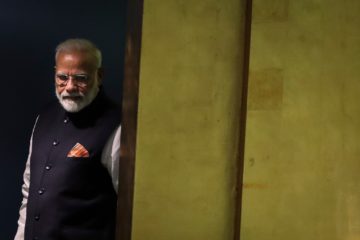 Tim Sahay in Foreign Policy:
Tim Sahay in Foreign Policy: Timothy Andersen in Aeon:
Timothy Andersen in Aeon: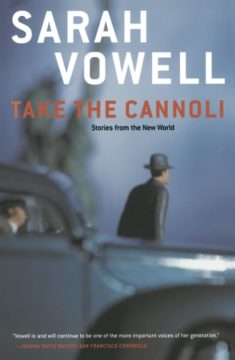 Vowell’s unforgettable early contribution to a relatively early incarnation of This American Life (back in 1999), in which she performed a similar feat, though that time unfurling the entire history of the United States drawing on the 720 degree panorama (360 degrees of space compounded by 360 degrees of time) available from just one street corner in Chicago. To wit, this one here: Michigan Avenue as it courses over the Chicago River and intersects with Wacker Drive.
Vowell’s unforgettable early contribution to a relatively early incarnation of This American Life (back in 1999), in which she performed a similar feat, though that time unfurling the entire history of the United States drawing on the 720 degree panorama (360 degrees of space compounded by 360 degrees of time) available from just one street corner in Chicago. To wit, this one here: Michigan Avenue as it courses over the Chicago River and intersects with Wacker Drive.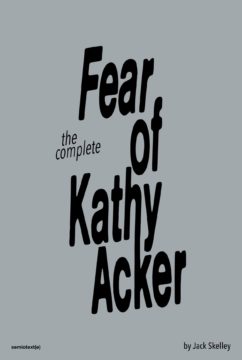 One of the strangest, most audacious winks Fear of Kathy Acker bestows is the fact that its contents have little to do with her. Yet Skelley pays substantial tribute to Acker in his introduction, pointing to his own literary puberty in which she was a catalyst: “[H]er vastly funny, scary, sexy portals to expression opened at a susceptible period. […] It was a nascent and fertile moment when Kathy, at the peak of her powers, disrupted me, erupted in me.” After hearing the chapbook discussed on the radio in the 1980s, Acker sent Skelley a postcard that would become a crowning endorsement of the work: “[D]espite my dislike of seeing my own name I think you’re a good writer […] Never what’s expected,” she wrote.
One of the strangest, most audacious winks Fear of Kathy Acker bestows is the fact that its contents have little to do with her. Yet Skelley pays substantial tribute to Acker in his introduction, pointing to his own literary puberty in which she was a catalyst: “[H]er vastly funny, scary, sexy portals to expression opened at a susceptible period. […] It was a nascent and fertile moment when Kathy, at the peak of her powers, disrupted me, erupted in me.” After hearing the chapbook discussed on the radio in the 1980s, Acker sent Skelley a postcard that would become a crowning endorsement of the work: “[D]espite my dislike of seeing my own name I think you’re a good writer […] Never what’s expected,” she wrote. Some years ago, a psychiatrist named Wendy Dean read an article about a physician who died by suicide. Such deaths were distressingly common, she discovered. The suicide rate among doctors appeared to be even higher than the rate among active military members, a notion that startled Dean, who was then working as an administrator at a U.S. Army medical research center in Maryland. Dean started asking the physicians she knew how they felt about their jobs, and many of them confided that they were struggling. Some complained that they didn’t have enough time to talk to their patients because they were too busy filling out electronic medical records. Others bemoaned having to fight with insurers about whether a person with a serious illness would be preapproved for medication. The doctors Dean surveyed were deeply committed to the medical profession. But many of them were frustrated and unhappy, she sensed, not because they were burned out from working too hard but because the health care system made it so difficult to care for their patients.
Some years ago, a psychiatrist named Wendy Dean read an article about a physician who died by suicide. Such deaths were distressingly common, she discovered. The suicide rate among doctors appeared to be even higher than the rate among active military members, a notion that startled Dean, who was then working as an administrator at a U.S. Army medical research center in Maryland. Dean started asking the physicians she knew how they felt about their jobs, and many of them confided that they were struggling. Some complained that they didn’t have enough time to talk to their patients because they were too busy filling out electronic medical records. Others bemoaned having to fight with insurers about whether a person with a serious illness would be preapproved for medication. The doctors Dean surveyed were deeply committed to the medical profession. But many of them were frustrated and unhappy, she sensed, not because they were burned out from working too hard but because the health care system made it so difficult to care for their patients. Hype springs eternal in medicine, but lately the horizon of new possibility seems almost blindingly bright. “I’ve been running my research lab for almost 30 years,” says Jennifer Doudna, a biochemist at the University of California, Berkeley. “And I can say that throughout that period of time, I’ve just never experienced what we’re seeing over just the last five years.”
Hype springs eternal in medicine, but lately the horizon of new possibility seems almost blindingly bright. “I’ve been running my research lab for almost 30 years,” says Jennifer Doudna, a biochemist at the University of California, Berkeley. “And I can say that throughout that period of time, I’ve just never experienced what we’re seeing over just the last five years.”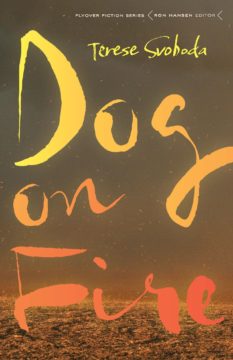 TERESE SVOBODA: At first, Make It Stop reads like a fast-paced action adventure with a superhero, but the mission fails, people die. Imagine that in a Bond film! So, while the reader’s gliding along in the narrative, lots of plot builds up, people struggle with sadness and what it’s like to be a hero, particularly an unknown super-ish hero. I love the term “powerless to unfuck” that you use to underscore their struggle. More and more of these heroes in media are presented with complex personalities. Were you influenced by that trend?
TERESE SVOBODA: At first, Make It Stop reads like a fast-paced action adventure with a superhero, but the mission fails, people die. Imagine that in a Bond film! So, while the reader’s gliding along in the narrative, lots of plot builds up, people struggle with sadness and what it’s like to be a hero, particularly an unknown super-ish hero. I love the term “powerless to unfuck” that you use to underscore their struggle. More and more of these heroes in media are presented with complex personalities. Were you influenced by that trend?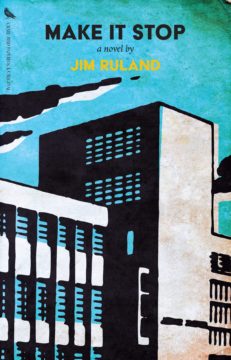 JIM RULAND: I don’t think so. You see a lot of that stuff in superhero movies, and before the pandemic I’d go see them with my daughter, but I read those comic books when I was her age in the ’80s. I knew from the very beginning that the vigilante group that my character Melanie was a part of would be highly dysfunctional, but I didn’t want it to be superficial. In blockbuster movies, there’s a scene or two where the main character is allowed to be sad and then it’s time to save the world again. Melanie’s world has been ripped apart—much like the narrator of Dog on Fire. What forces shaped your novel?
JIM RULAND: I don’t think so. You see a lot of that stuff in superhero movies, and before the pandemic I’d go see them with my daughter, but I read those comic books when I was her age in the ’80s. I knew from the very beginning that the vigilante group that my character Melanie was a part of would be highly dysfunctional, but I didn’t want it to be superficial. In blockbuster movies, there’s a scene or two where the main character is allowed to be sad and then it’s time to save the world again. Melanie’s world has been ripped apart—much like the narrator of Dog on Fire. What forces shaped your novel?